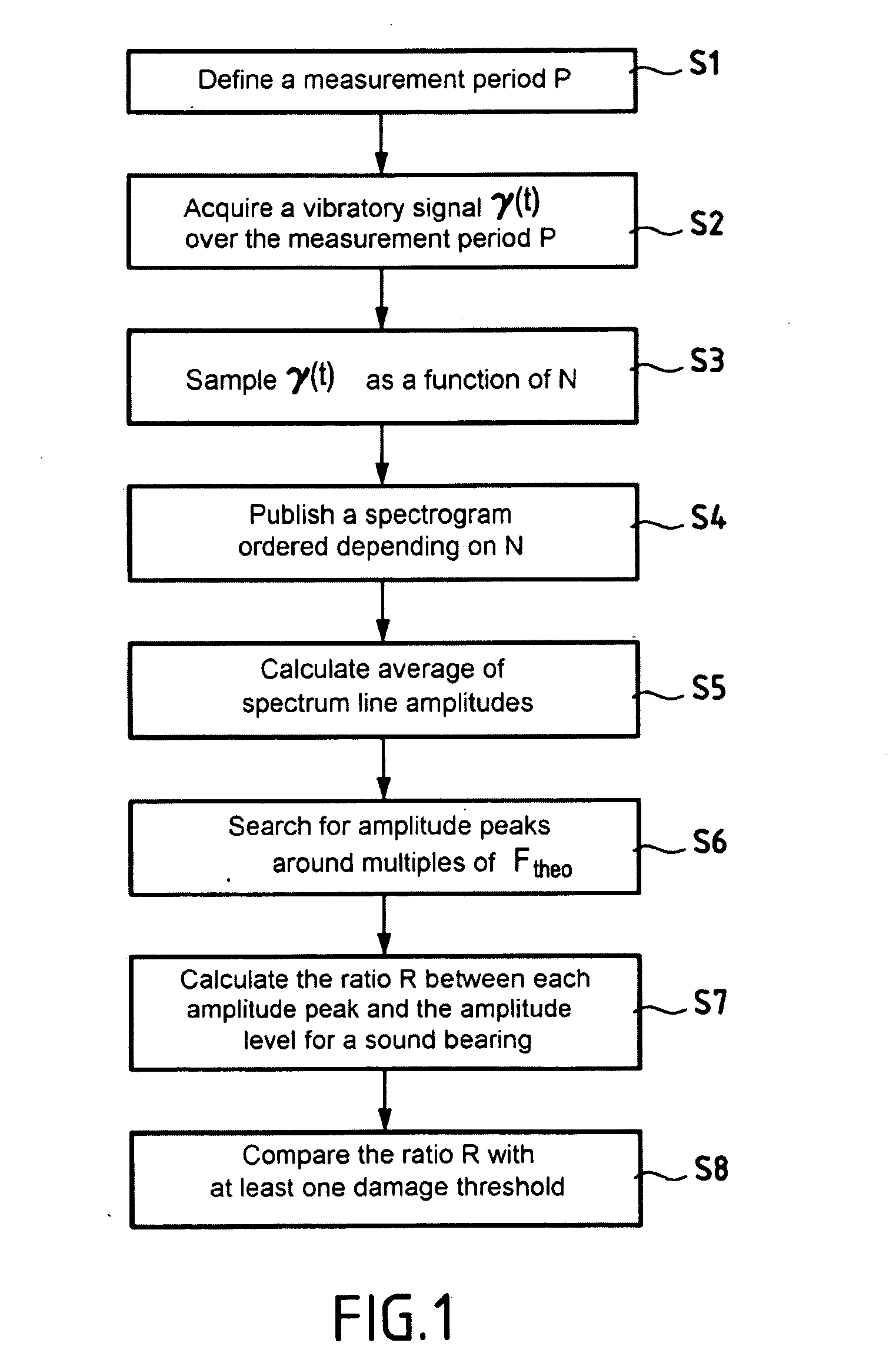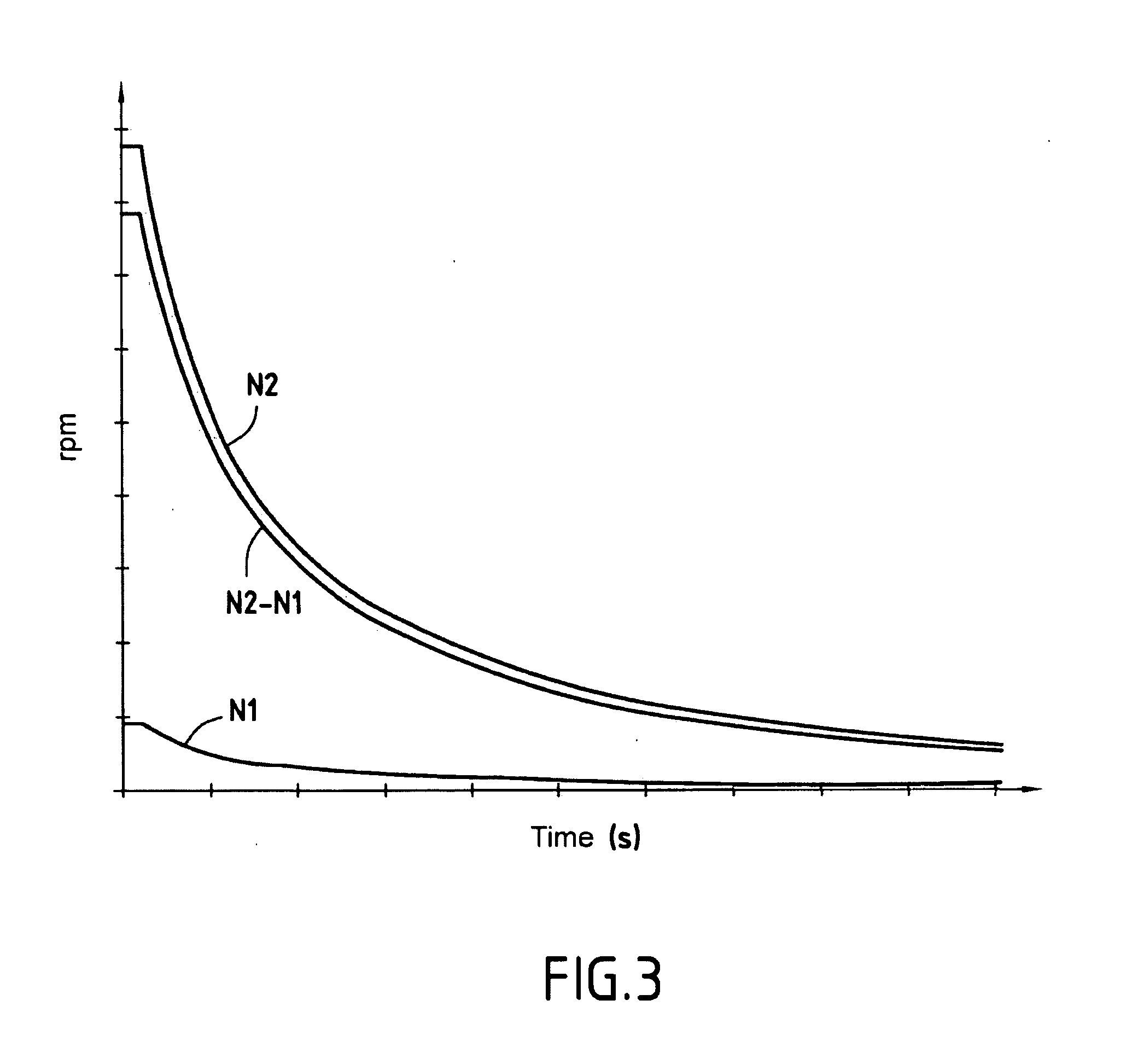Method of detecting damage to an engine bearing
a technology of engine bearings and detection methods, applied in the direction of fluid pressure measurement by mechanical elements, solid vibration measurement, machine part testing, etc., can solve the problems of difficult to discern vibration levels and not always detect damage, and achieve the effect of reducing such drawbacks
- Summary
- Abstract
- Description
- Claims
- Application Information
AI Technical Summary
Benefits of technology
Problems solved by technology
Method used
Image
Examples
Embodiment Construction
[0025]Reference is made to FIG. 1 which shows the steps making up a method in accordance with the invention for detecting damage to a rolling bearing providing rotary support for at least one rotary shaft of an engine.
[0026]In general, the invention applies to any type of engine that possesses at least one rotary shaft and at least one rolling bearing and that presents renewable activity at low speed (starting stage, stopping stage, idling, low-speed cycling, etc.). Amongst such engines, mention can be made, for example, of airplane or helicopter gas turbine engines (referred to as turbomachines), terrestrial gas turbines, gearboxes, axle engines, etc.
[0027]The principle on which the invention is based is that the frequency that results from bearing damage is proportional to the speed of rotation of the rotary shaft supported by the bearing. The assumption is that this frequency will be transmitted to an acceleration sensor via the components of the engine that are themselves vibrat...
PUM
 Login to View More
Login to View More Abstract
Description
Claims
Application Information
 Login to View More
Login to View More - R&D
- Intellectual Property
- Life Sciences
- Materials
- Tech Scout
- Unparalleled Data Quality
- Higher Quality Content
- 60% Fewer Hallucinations
Browse by: Latest US Patents, China's latest patents, Technical Efficacy Thesaurus, Application Domain, Technology Topic, Popular Technical Reports.
© 2025 PatSnap. All rights reserved.Legal|Privacy policy|Modern Slavery Act Transparency Statement|Sitemap|About US| Contact US: help@patsnap.com



